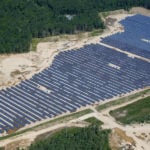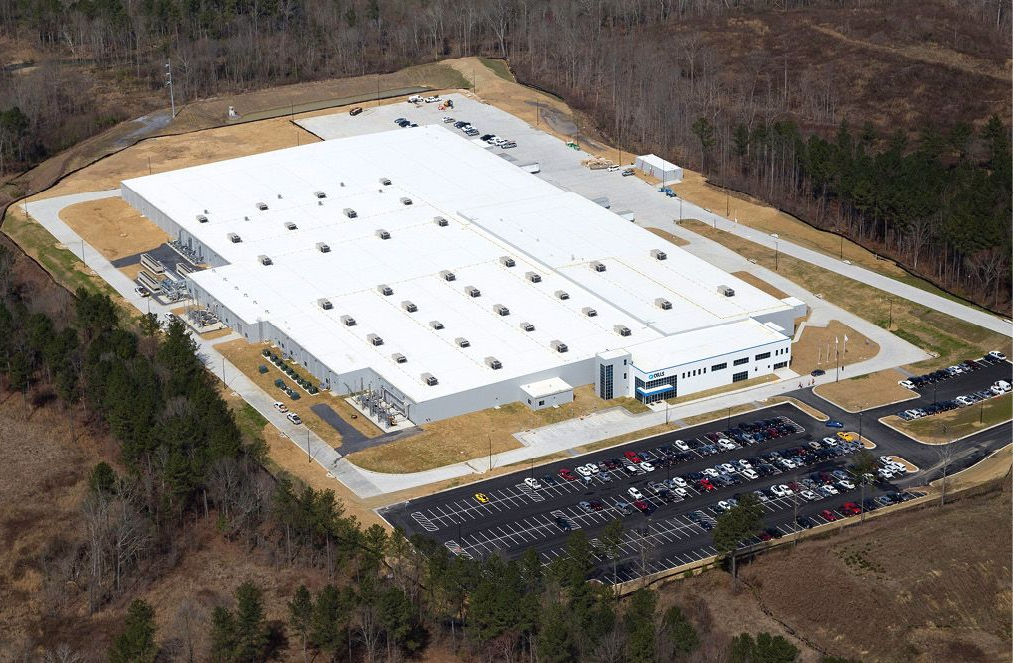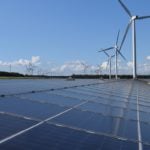Latest
Features , Long Reads , News
A solar facility in the US state of Massachusetts. Credit: Greg M. Cooper via Borrego Solar and SEIA
The US installed 11.8GWdc of capacity in the first quarter of 2024 and added more than 40GW of solar capacity to the grid last year, according to the Solar Energy Industries Association (SEIA).
A report conducted in collaboration with Wood Mackenzie said the new capacity additions in Q1 2024 represented a record first quarter for the US solar industry and the second-largest quarter of installations ever, second only to Q4 2023. With the new additions, solar accounted for 75% of all new electricity-generating capacity added to the grid in the US in Q1.
This article requires Premium Subscription Basic (FREE) Subscription
Unlock unlimited access for 12 whole months of distinctive global analysis
Photovoltaics International is now included.
Regular insight and analysis of the industry’s biggest developments
In-depth interviews with the industry’s leading figures
Unlimited digital access to the PV Tech Power journal catalogue
Unlimited digital access to the Photovoltaics International journal catalogue
Access to more than 1,000 technical papers
Discounts on Solar Media’s portfolio of events, in-person and virtual
Or continue reading this article for free
Geographically, Florida installed the most solar in Q1, with new additions totalling 2.7GWdc, followed by Texas (2.6GWdc). New installations from both states were mainly from utility-scale projects.
The utility-scale segment saw impressive growth in Q1 as the US installed 9.8GWdc in the quarter. SEIA said this was the largest Q1 ever for utility-scale deployment, more than double the volume of any previous Q1. It added that the spike in Q1 was driven by a backlog of projects that were slated to come online in 2023 but did not materialise until Q1 2024.
Additionally, the US governments two-year tariff waiver on imported Southeast Asian crystalline silicon modules ends in June 2024. The temporary waiver has contributed to increased imports and higher module inventory levels. Modules imported under the waiver must be utilised within 180 days of the expiration of the waiver (3 December 2024). This has driven increased installation activity at the start of the year.
Aside from Florida and Texas, California and Nevada also played a significant role in the growth of the utility-scale segment.
Newly contracted utility-scale projects in Q1 2024 reached 4.4GWdc, with corporate and utility procurement cited as the main drivers.
Meanwhile, the residential segment in the US had its lowest quarter since Q1 2022 at 1.3GWdc, representing a 25% drop year-on-year and 18% quarter-on-quarter. Although slowdowns happened throughout the US, the drop was mainly influenced by California due to its transitions to the net billing tariff.
SEIA said a slowdown in Q1 is a typical phenomenon in the residential solar segment. In Q1 2024, 28 states experienced both quarter-on-quarter and year-on-year declines in installed capacity due to high financing costs. In Texas, the installed capacity dropped for five quarters in a row. Top installers in Texas even experienced more than 60% reductions in installation volumes compared to Q1 2023.
Looking ahead, the US solar industry is expected to install about 40GWdc of capacity every year for the next five years. However, in both 2024 and 2025, growth is expected to be flat driven mostly by a slowdown in growth for utility-scale solar. Other factors, such as labour shortages, high voltage equipment constraints and continued trade policy uncertainty, will also slow down growth. Annual growth will average single digits between 2026 and 2029.
Total solar capacity in the US is expected to double over the next five years, growing to 438GW by 2029.
US manufacturing capacity
Aside from installed solar capacity, SEIA said domestic module manufacturing capacity increased to 26.6GW in Q1 2024, compared to 15.6GW in Q4 2023. If the capacity fully ramps up, it will be able to supply about 70% of domestic demand in the US. SEIA said the additions were the largest in the history of the US solar manufacturing industry.
Earlier this year, PV Tech featured an article written by Christian Roselund, senior policy analyst at Clean Energy Associates (CEA), who predicted that the US solar industry will have enhanced solar manufacturing capacity and clarity on the domestic content bonus, in addition to more restrictions on Chinese companies and products.
San Francisco Bay Area, USA
PV Tech has been running an annual PV CellTech Conference since 2016. PV CellTech USA, on 8-9 October 2024 is our second PV CellTech conference dedicated to the U.S. manufacturing sector. The event in 2023 was a sell out success and 2024 will once again gather the key stakeholders from PV manufacturing, equipment/materials, policy-making and strategy, capital equipment investment and all interested downstream channels and third-party entities. The goal is simple: to map out PV manufacturing in the U.S. out to 2030 and beyond.
Understanding PV module supply to the European market in 2025. PV ModuleTech Europe 2024 is a two-day conference that tackles these challenges directly, with an agenda that addresses all aspects of module supplier selection; product availability, technology offerings, traceability of supply-chain, factory auditing, module testing and reliability, and company bankability.
The conference will gather the key stakeholders from PV manufacturing, equipment/materials, policy-making and strategy, capital equipment investment and all interested downstream channels and third-party entities. The goal is simple: to map out PV manufacturing out to 2030 and beyond.
PV Tech has been running PV ModuleTech Conferences since 2017. PV ModuleTech USA, on 17-18 June 2025, will be our fourth PV ModulelTech conference dedicated to the U.S. utility scale solar sector. The event will gather the key stakeholders from solar developers, solar asset owners and investors, PV manufacturing, policy-making and and all interested downstream channels and third-party entities. The goal is simple: to map out the PV module supply channels to the U.S. out to 2026 and beyond.
Read Next
Recurrent Energy, the solar project development subsidiary of global solar manufacturer Canadian Solar, has made an initial closing on BlackRocks investment.
The US Department of Energy (DOE) has invested US$9.5 million into four institutions to examine the social impacts of utility-scale solar project siting.
Liontown Resources’ 95MW hybrid power station, including solar, has started powering its Western Australian Kathleen Valley Lithium Project.
Spanish renewables firm Elawan Energy has established a joint venture to develop 2GW of solar PV projects in Italy.
US analyst Lazard notes that renewable energy technologies continue to have some of the lowest LCOE figures in the US.
The development includes the 445MW Bilasuvar solar PV project, the 315MW Neftchala solar PV project, in addition to a 240MW wind project.
Subscribe to Newsletter
Most Read
Upcoming Events
3:00 PM (BST) / 4:00 PM (CEST)
Sands Expo and Convention Centre, Singapore
https://www.pv-tech.org/us-breaks-q1-record-to-add-11-8gwdc-solar-capacity-in-previous-quarter/





